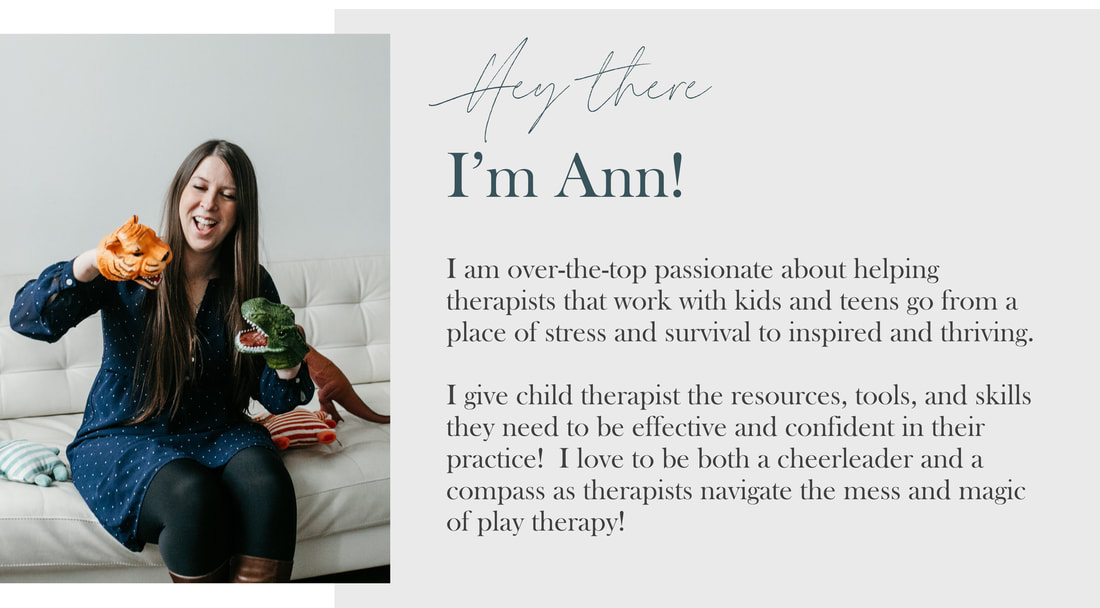What Every Play Therapist Should Know About How Trauma Impacts Emotional Regulation: Part Two7/12/2023
Let’s dive into one of my favorite topics - A.K.A. trauma and emotional regulation - Part Two!
In this blog HERE I touched on Adaptive Information Processing Theory (AIP Model) to help get an understanding of why trauma memories are stored and processed differently, and how this memory storage relates to difficulty with being triggered in the here and now! If you are just tuning in - definitely go back and read that article firstHERE! Okay - now let’s get into another important piece to the puzzle for how trauma impacts emotional regulation - Polyvagal Theory!
Dr. Stephen Porges developed the Polyvagal Theory as a way to explain emotional regulation through the lens of the autonomic nervous system. Specifically the role the vagus nerve plays in what part of our nervous systems are active.
Dr. Porges outlined these three responses of the social engagement system:
Along with a ton of other mechanisms our amygdala plays the role of the security guard monitoring thousands of screens. And it sorts. It assesses what in the external world is safe (signaling it is okay to stay in ventral vagal) and what is dangerous (leading to sympathetic or parasympathetic nervous system activation). The amygdala checks in with the hippocampus for some context (asking the question “What do we know about this?”) and decides - is this safe OR do I need to fight or run away for my life. If you are looking for a good resource for play therapy for this Hey Warrior is the book you need. Now, the amygdala is often not so great at determining what is actually dangerous or safe. AND - here is the important part - people with trauma have a significantly more difficult time determining safety from danger. This is likely due to isolated memory networks (see previous note on Adaptive Information Processing) that hold millions and billions of bits of data that are associated with danger. So what does all of this mean? People with trauma experiences often perceive a significantly greater amount of stimulus as dangerous leading to significantly more dysregulated reactions that we typically know as trauma symptoms. Okay - let’s consider this example. You have a client (who I just completely made up for the purpose of this blog) who came in for symptoms of trauma regarding a dog bite. Let’s say this is a single event trauma where the client has an intact and secure attachment system. Maybe they are 10 years old (so not a preverbal trauma case) and came in two weeks after the trauma occurred. Oh - and this client has a dog and has had thousands of positive interactions with dogs. Until the one traumatic episode where this client didn’t. Now, maybe this client comes in and has a difficult time spending time in the backyard due to being worried a dog will come and can’t bike around the neighborhood due to feeling afraid of dogs. Makes sense right? But what about when this client has a panic attack or a rage episode while sitting in their bedroom reading a book (that isn’t about dogs). Did this come out of the blue? Let’s get curious. Could it be that during the trauma experience they smelled fresh cut grass and now their neighbor is mowing the lawn and they can smell the cut grass through the window? Could it be that it was raining when the trauma occurred and the client is hearing rain on their window? Could it be that they are wearing the same shirt they had on when they got bit and didn’t realize it? Yes. Yes. Yes. And - because there is no way to know 100% of the details around the trauma when it occurred, we may never be able to put these pieces together in the office to know for sure. Building on this - when we work with kids with complex and chronic trauma it is not just one episode or memory but up to hundreds if not thousands of memory networks. If we can start to broaden our idea and understanding of what a trauma response is and how clients with trauma have a different experience of emotional dysregulation that is often outside of conscious awareness we can begin to think differently about these responses as making sense in the context of trauma. This can decrease client shame surrounding these (sometimes seemingly "out of the blue") reactions and increase compassion. This knowledge can also help us provide psychoeducation to parents, caregivers, teachers, and other important systems in a child’s life AND shift our perspective from this behavior as purposeful, calculated, or an "overreaction" to an understanding of these symptoms as likely a trauma trigger likely under conscious awareness. Want more information on how emotional regulation is impacted by trauma? Check out my course Keep Calm and Regulate On: Play Therapy and the Neuroscience of Emotional Regulation! Loading...
0 Comments
Leave a Reply. |
Hi, there!I'm Ann Meehan, an LPCC, Loading... Archives
July 2024
Categories
All
|
Privacy Policies | Terms of Use | Disclaimer
Contact
[email protected] | Copyright Meehan Mental Health Services 2022
Contact
[email protected] | Copyright Meehan Mental Health Services 2022







